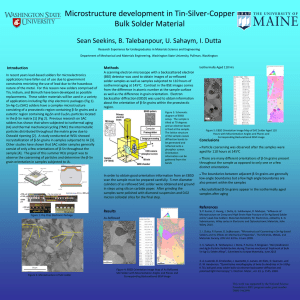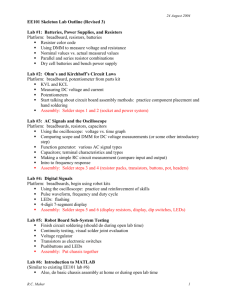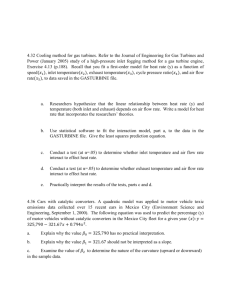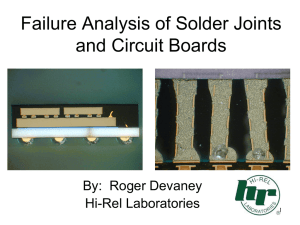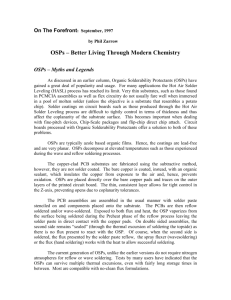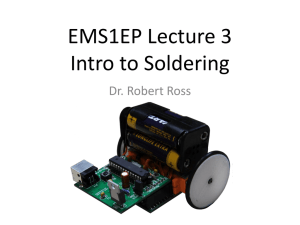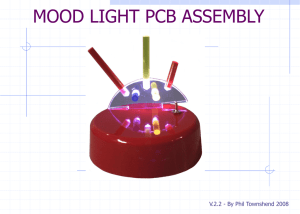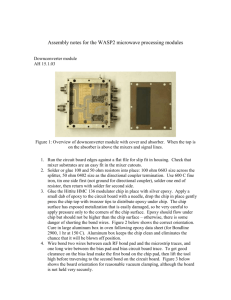Effect of Solder Composition and Sn Grain Morphology. Eric
advertisement
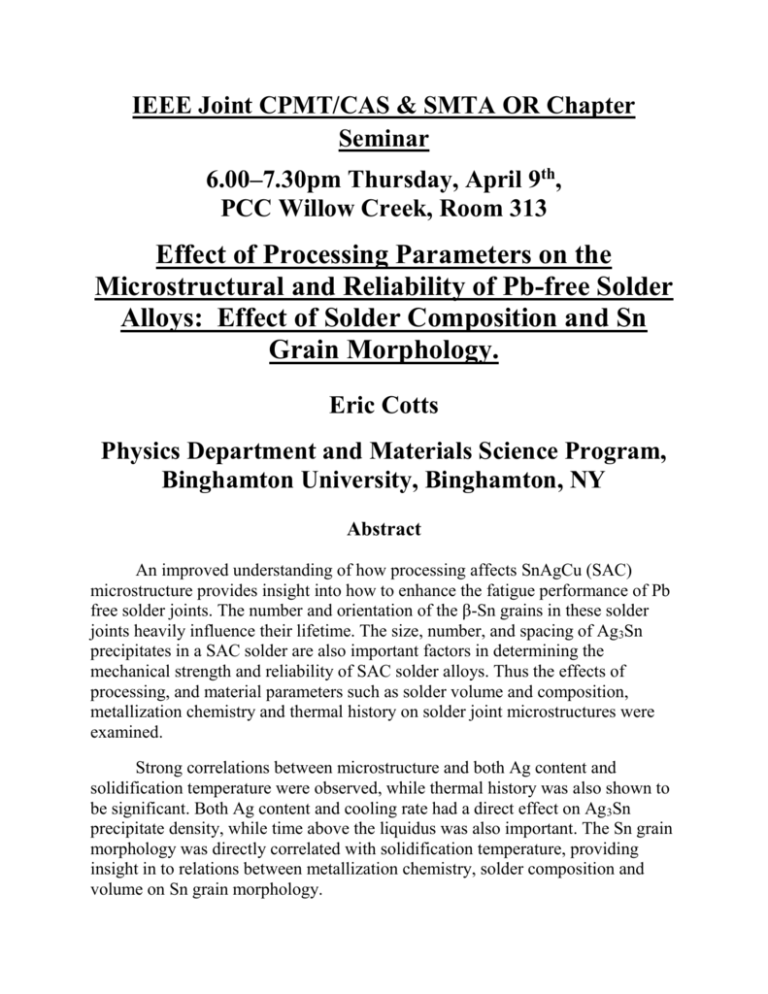
IEEE Joint CPMT/CAS & SMTA OR Chapter Seminar 6.00–7.30pm Thursday, April 9th, PCC Willow Creek, Room 313 Effect of Processing Parameters on the Microstructural and Reliability of Pb-free Solder Alloys: Effect of Solder Composition and Sn Grain Morphology. Eric Cotts Physics Department and Materials Science Program, Binghamton University, Binghamton, NY Abstract An improved understanding of how processing affects SnAgCu (SAC) microstructure provides insight into how to enhance the fatigue performance of Pb free solder joints. The number and orientation of the β-Sn grains in these solder joints heavily influence their lifetime. The size, number, and spacing of Ag3Sn precipitates in a SAC solder are also important factors in determining the mechanical strength and reliability of SAC solder alloys. Thus the effects of processing, and material parameters such as solder volume and composition, metallization chemistry and thermal history on solder joint microstructures were examined. Strong correlations between microstructure and both Ag content and solidification temperature were observed, while thermal history was also shown to be significant. Both Ag content and cooling rate had a direct effect on Ag 3Sn precipitate density, while time above the liquidus was also important. The Sn grain morphology was directly correlated with solidification temperature, providing insight in to relations between metallization chemistry, solder composition and volume on Sn grain morphology. In a companion study led by Universal Instruments Corporation, custom made ball grid array (BGA) packages were tested in accelerated thermal cycling (ATC). Various solder alloys doped with Ni (SN100C) and Mn (SAC105-Mn and SACM), as well as SAC105, SAC 205 SAC 305 and SAC 405 and eutectic SnPb alloys were reflowed on printed circuit board (PCB) surface finishes, either copper organic solderability preservative (Cu-OSP) or electroless nickel immersion gold (ENIG). Precipitate sizes and distributions were analyzed using backscattered scanning electron microscopy (SEM). Sn grain morphology was characterized by polarized light microscopy (PLM) and electron backscatter diffraction (EBSD). The results of the ATC studies were correlated with solder joint microstructure. Distinct dependences of lifetime on solder composition were observed, with increases in lifetimes with increases in Ag content. The effect of variation in solder composition and volume and PCB surface finish on solder joint microstructure and lifetime was also evaluated. Cu/ENIG surface finishes generally resulted in better thermal fatigue performances. Results also showed that solder volume can greatly affect the microstructure and performance of SAC solder joints in mechanical and ATC tests. Biography Eric Cotts is a professor in the Materials Science program, and the Physics department, at Binghamton University. He received his BS degree from Cornell University in 1978 and his PhD degree from the University of Illinois at UrbanaChampaign in 1983. His research group studies phase transformations in metal systems, with a focus on applications for microelectronics devices. For instance, studies of the dependence of nucleation rates of undercooled Sn on impurity content provided recommendations for the processing of interconnects. All welcome

